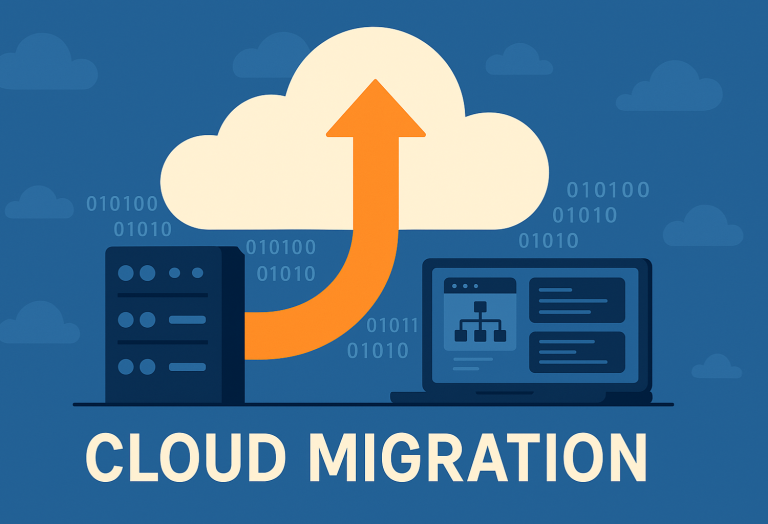
Cloud Networking is a hot topic in today’s world. It has become an essential part of modern IT infrastructure. It will likely continue to be in demand as more organizations adopt cloud computing and seek to leverage the benefits of the cloud. Let’s learn about this approach in detail.
What is Cloud Networking?
Cloud networking builds on cloud computing infrastructure; consequently, it enables on-demand network access to a shared pool of computing resources, including servers, storage, applications, networks, and services hosted in the cloud.
Why is Cloud Networking needed and in high demand?
In this digital era, the demand for this approach is sky-high as modern businesses rely on cloud computing to access their applications, data, and services from anywhere, anytime, using any device.
This model allows companies to connect their cloud resources, such as virtual machines, databases, and applications, to their local networks and other cloud resources. This connectivity will enable them to create hybrid cloud environments that provide the benefits of both public and private cloud environments. For instance, businesses can leverage the scalability and cost savings of public cloud services while still maintaining control over their sensitive data and applications by keeping them on-premises or in a private cloud.
Moreover, this networking approach provides several other benefits that make it attractive for organizations.
Benefits of Cloud Networking
- Scalability and Flexibility:
This approach allows for easy and efficient scaling of resources to meet changing business needs. As a result, organizations can quickly add or remove resources as needed without the need for additional hardware or infrastructure.
- Accessibility and Collaboration:
This approach enables users to access applications and data anywhere and anytime. This facilitates collaboration between remote teams and allows for easy sharing of data and resources.
- Disaster Recovery and Business Continuity:
Organizations can establish disaster recovery and business continuity plans by utilizing redundant data storage and backup solutions. This ensures that data is protected and available even during a disaster or outage.
- Improved Performance and Reliability:
This approach provides improved performance and reliability by leveraging advanced networking technologies, such as load balancing and caching, to optimize traffic routing and reduce latency.
- Increased Agility and Innovation:
This enables organizations to be more agile and innovative by reducing the time and cost associated with deploying new applications and services. This allows organizations to respond quickly to changing market conditions and customer needs.
- Better security:
This model allows organizations to implement security policies and controls across all their cloud resources, providing a consistent and unified security posture.
- Cost savings:
This approach can reduce costs associated with managing and maintaining on-premises networking infrastructure.
How Does Cloud Networking Work?
Cloud networking connects and manages resources in a cloud environment, including virtual machines, databases, applications, and storage through a network. Consequently, it enables users to access and manage these resources from anywhere, using any device over the internet.
To achieve this, a cloud service provider typically provides various networking services, such as virtual private networks (VPNs), load balancing, and firewalls. These services are usually offered through software-defined networking (SDN), which enables the creation of virtual networks that can be easily managed and customized.
When a user accesses a cloud application or service, the request is sent over the internet to the cloud provider’s network. The network then directs the request to the appropriate resource, such as a virtual machine or database, using routing and load balancing techniques to ensure efficient use of resources and optimal performance.
This approach also allows hybrid cloud environments, where resources from multiple clouds and on-premises infrastructure are connected and managed through a single network. This enables organizations to leverage public and private clouds’ benefits while maintaining control over their sensitive data and applications.
How is the Cloud Changing Traditional Networking?
The cloud is changing traditional networking by enabling greater flexibility, scalability, and efficiency in managing network resources. It is changing traditional networking in several ways, such as:
Decentralization of Resources:
Traditional networking relied on a centralized data center or server to manage and store data. However, this networking model distributes resources across multiple data centers and locations, thereby allowing organizations to use resources more efficiently and access data faster.
Virtualization of Network Resources:
This networking approach heavily relies on virtualization technologies that enable the creation of virtual networks, virtual servers, and virtual storage. Consequently, this facilitates easier management and allocation of resources while also providing greater flexibility in responding to changing business needs.
Automation and Orchestration:
This model relies on automation and orchestration technologies to manage and configure network resources. Automation allows more efficient management of resources and reduces the need for manual intervention.
Scalability and Elasticity:
Cloud networking enables organizations to quickly scale up or down their network resources to meet changing business needs. So, organizations can use resources more efficiently, and there is no more requirement of over-provisioning.
Cloud Networking Types
Public cloud networking:
This involves using public cloud infrastructure and services to deliver network resources and services. Examples of public cloud networking services include Amazon Web Services (AWS), Microsoft Azure, etc.
Private cloud networking:
This involves utilizing a private cloud infrastructure to deliver network resources and services. Typically, individual organizations own and manage these private clouds, which are specifically designed to offer a more secure and customizable networking environment.
Hybrid cloud networking:
This involves using a combination of public and private cloud infrastructure and services to deliver network resources and services. Hybrid cloud networking is helpful for organizations that require the flexibility and scalability of public cloud services but also require the security and control of a private cloud environment.
Multi-cloud networking:
This approach involves utilizing multiple public cloud providers to deliver network resources and services. Consequently, multi-cloud networking is beneficial for organizations that aim to avoid vendor lock-in while ensuring high availability for their services.
Software-defined networking (SDN):
This approach involves utilizing software to manage and automate network infrastructure and services. As a result, SDN offers flexibility, scalability, and control over network resources, making it a common choice in cloud solutions.
Conclusion:
This article will help you to have a brief knowledge of cloud networking. If you look forward to incorporating cloud networking in your businesses and embracing its advantages, you can consult a cloud IT consulting service provider.







